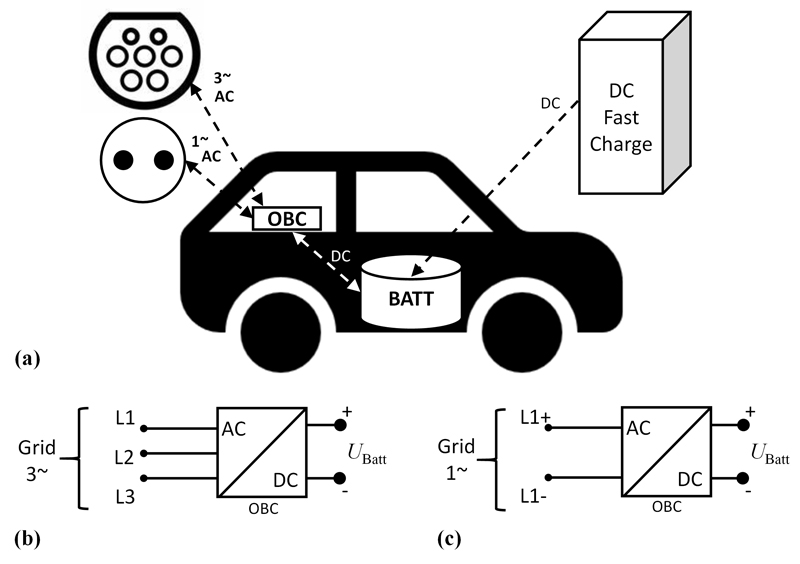
Click image to enlarge
Figure 1: The traction battery of a xEV can be charged via a DC charging station or, via the OBC, from the AC grid (a). This article focuses on AC charging, especially on transformerless OBCs to be operated at (European) three-phase grids (b) and North-American single-phase (“split-phase”) grids (c)